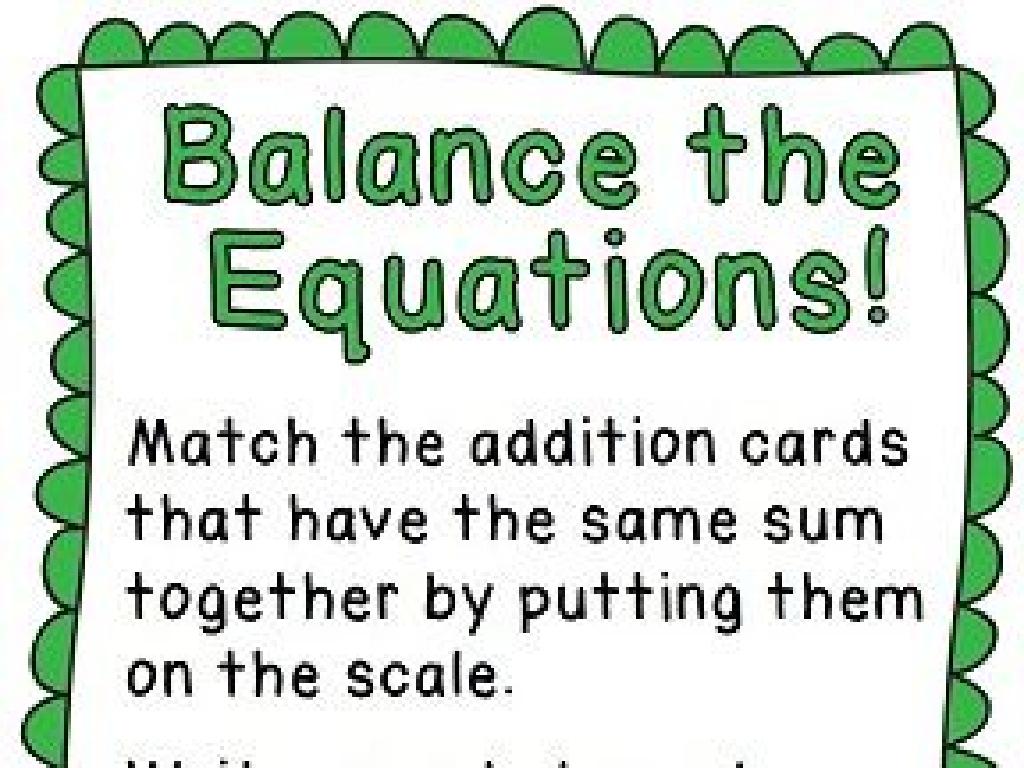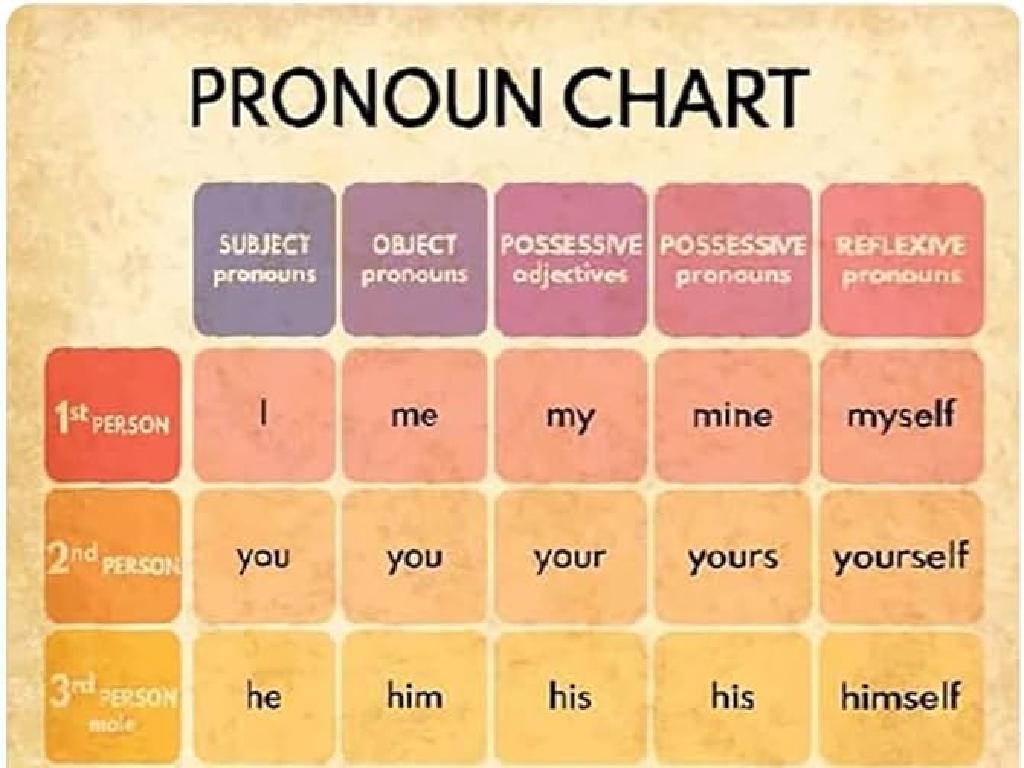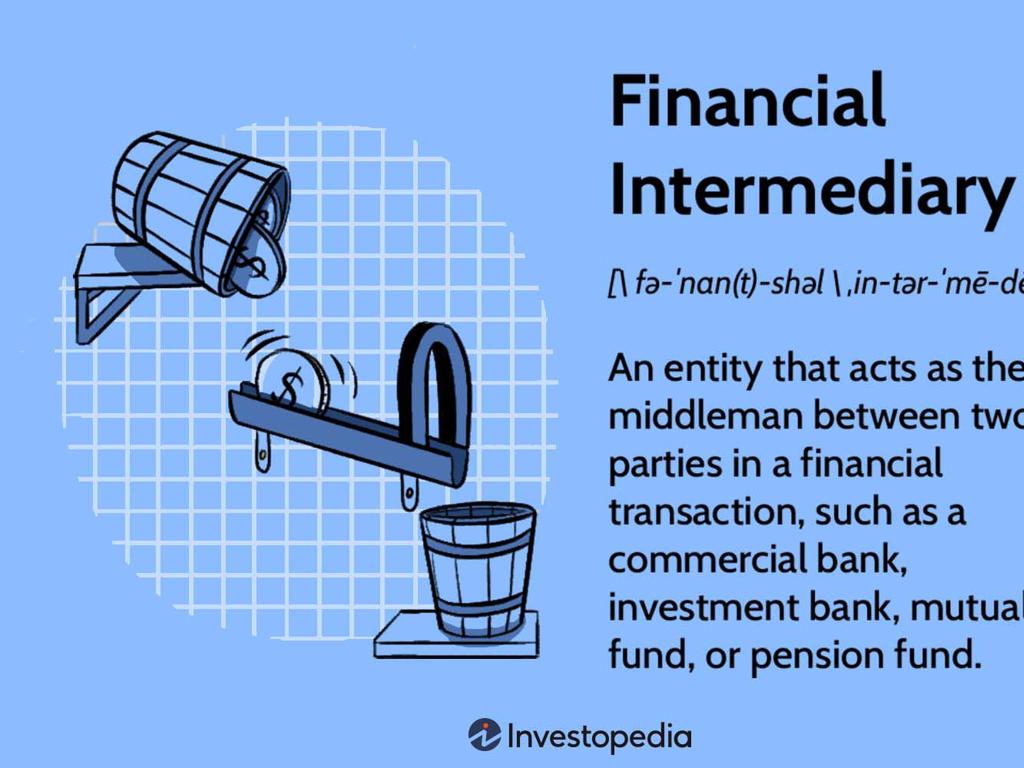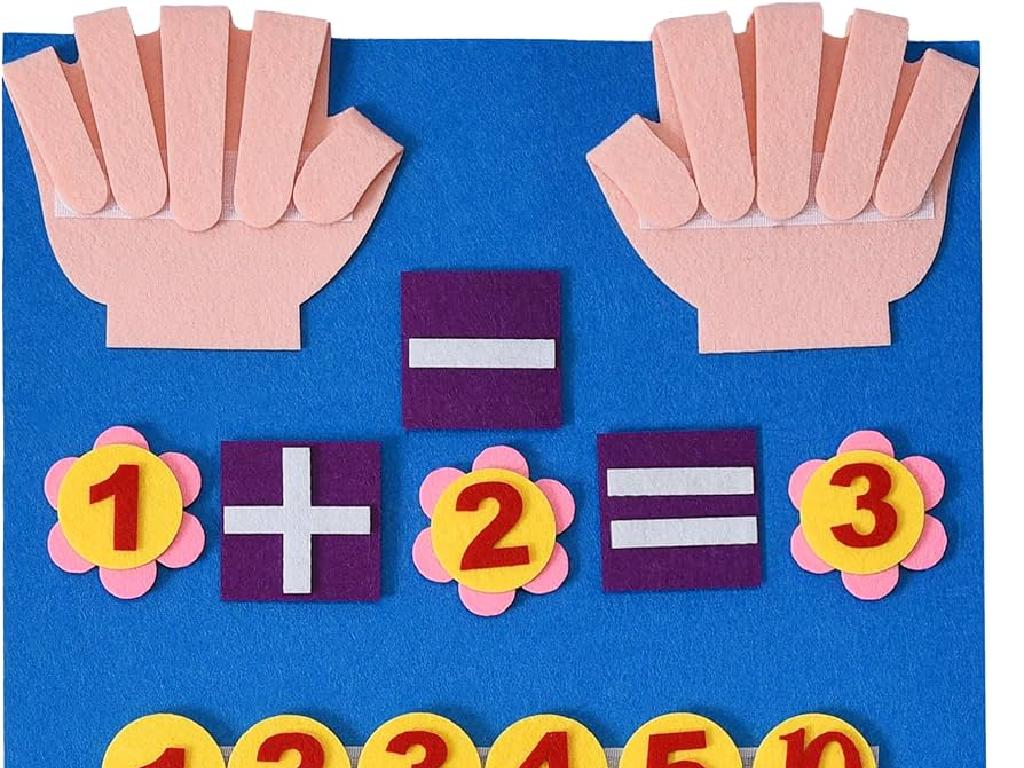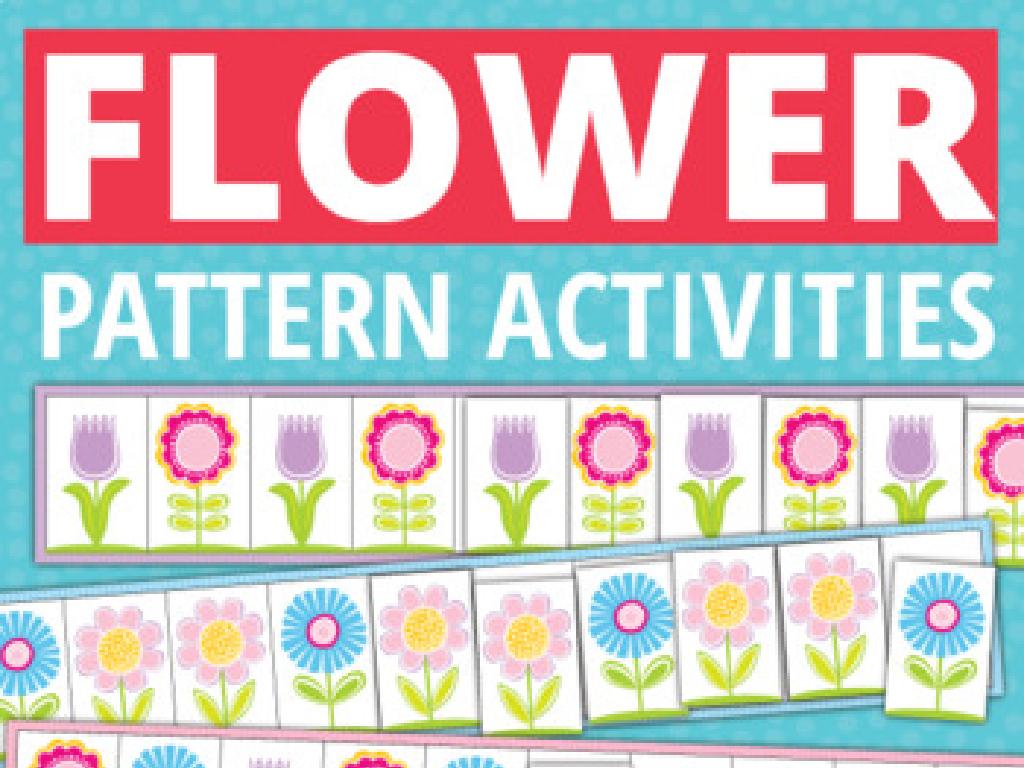Find The Elapsed Time
Subject: Math
Grade: Third grade
Topic: Elapsed Time
Please LOG IN to download the presentation. Access is available to registered users only.
View More Content
Introduction to Elapsed Time
– Understanding time and clocks
– Clocks help us know the time; we see them everywhere!
– What is ‘Elapsed Time’?
– Elapsed time is how long something takes, from start to finish.
– Importance of measuring time
– Knowing elapsed time helps us with schedules and planning.
– Practice finding elapsed time
|
This slide introduces the concept of elapsed time to third-grade students. Begin by discussing the basics of time and how clocks are used to measure it. Explain that elapsed time is the amount of time that passes from the beginning of an event to its end. Emphasize the importance of measuring elapsed time in everyday life, such as knowing how long it takes to get to school or how much time is left until a birthday party. Encourage students to think of examples from their daily routines. Conclude by mentioning that they will practice finding elapsed time, which will help them become more independent and better at managing their time.
Understanding Parts of a Clock
– Review Hour and Minute Hands
– The short hand shows hours, the long one shows minutes.
– Identify Numbers and Tick Marks
– Numbers 1-12 represent hours, tick marks show minutes.
– Reading Time on a Clock
– Point to where the hands are and say the time out loud.
|
This slide is aimed at helping third-grade students understand the basic components of an analog clock, which is essential for learning to find elapsed time. Start by reviewing the hour and minute hands, emphasizing the difference in their lengths and functions. Then, identify the numbers on the clock face, explaining that they represent hours, and the tick marks in between, which represent minutes. Teach students how to read the time by looking at the position of the hour and minute hands. Use examples of different times and have students practice by pointing out the time on classroom clocks or paper clock cutouts. This foundational knowledge will be crucial for the next lesson on calculating elapsed time.
Simple Elapsed Time Within an Hour
– Learn to find elapsed time
– Count by fives to add minutes
– Use the clock to count in increments of 5 minutes
– Example: 3:00 PM to 3:30 PM
– Starting at 3:00, count by fives until 3:30
– Practice with different times
– Try finding elapsed time from 2:15 PM to 2:45 PM
|
This slide introduces students to the concept of elapsed time, specifically focusing on time intervals within one hour. Students will learn to use a clock to count by fives, which helps in adding minutes easily. The example provided, from 3:00 PM to 3:30 PM, is a straightforward way to demonstrate how to calculate a 30-minute interval. Encourage students to practice with different starting and ending times, such as 2:15 PM to 2:45 PM, to reinforce the concept. The goal is for students to become comfortable with recognizing and calculating elapsed time in small, manageable increments.
Calculating Elapsed Time Over Hours
– Steps to calculate elapsed time
– Count the hours from start to end time
– Example: 10:00 AM to 2:00 PM
– From 10 AM to 2 PM is 4 hours
– Use a number line for visualization
– Draw a line with hours marked to see the time pass
– Practice with different examples
|
This slide is aimed at teaching third graders how to calculate the amount of time that has passed from one event to another over the course of multiple hours. Start by explaining the concept of elapsed time and then demonstrate the process using an example, such as the time from 10:00 AM to 2:00 PM, which is a 4-hour difference. Introduce the number line as a tool to help visualize the passing of time, making it easier for students to grasp the concept. Encourage students to practice with different time periods and use the number line to find the elapsed time. This will help solidify their understanding and improve their time-telling skills.
Using a T-Chart to Find Elapsed Time
– How to set up a T-Chart
– Record Start and End Times
– Write down when events begin and finish
– Calculate Elapsed Time
– Find the difference between end and start times
– Class Practice Example
– We’ll solve an example together as a class
|
This slide introduces the concept of using a T-Chart to find elapsed time, which is a practical skill for third graders to understand the concept of duration. Start by explaining the structure of a T-Chart and its purpose. Then, guide students to fill in the start time and end time for various activities. The next step is to demonstrate how to calculate the elapsed time by finding the difference between the two times. Finally, engage the class with a practice example, such as ‘Start Time: 3:00 PM, End Time: 4:30 PM, Elapsed Time: ?’ Walk through the problem-solving process together, ensuring that students understand each step. Encourage them to ask questions and provide assistance as needed.
Elapsed Time in Daily Activities
– Baking cookies duration
– How long from start to finish? Usually around 30 minutes.
– Length of a soccer game
– Soccer games last about 90 minutes.
– Homework completion time
– How much time for math or reading homework? Maybe 20 minutes.
|
This slide aims to help students understand the concept of elapsed time through relatable activities. Start by asking students how long they think it takes to bake a batch of cookies, then reveal that it typically takes about 30 minutes. Discuss the duration of a soccer game, which is approximately 90 minutes, including half-time. For homework, guide them to estimate and then track the actual time spent on an assignment. These real-life examples will make the abstract concept of time more concrete, and students can apply this understanding to various scenarios in their daily lives. Encourage them to use clocks or timers to measure elapsed time for these activities.
Class Activity: Time Detectives
– Pair up and become time detectives
– Receive a worksheet with time problems
– Each worksheet has different sets of times
– Solve the start and end time puzzles
– Use clocks or number lines to find elapsed time
– Share and discuss solutions with the class
|
In this engaging class activity, students will work in pairs to solve elapsed time problems, fostering collaboration and problem-solving skills. Distribute worksheets with various start and end times, ensuring each pair has a unique set. Encourage students to use tools like clocks or number lines to visualize and calculate the elapsed time. After solving the problems, pairs will share their solutions with the class, allowing for discussion and peer learning. As a teacher, prepare to guide them through different methods of finding elapsed time and provide assistance as needed. Possible activities include real-life scenarios, such as determining the duration of a lunch break or the time spent on homework.
Wrapping Up: Elapsed Time
– Recap: Steps to find elapsed time
– Remember to note the start and end times, then calculate the difference.
– Elapsed time in daily life
– Knowing how long tasks take helps us plan our day.
– Importance of elapsed time
– It’s essential for time management and meeting deadlines.
– Looking ahead: Scheduling events
|
As we conclude today’s lesson, we’ll review the key steps to find elapsed time: noting the start and end times and calculating the difference. Emphasize the practicality of this skill in everyday life, such as determining the duration of a trip, or how long a homework assignment takes. Understanding elapsed time is crucial for effective time management and is a skill that students will use throughout their lives. Tomorrow, we will build on this knowledge by learning how to schedule events, which will involve applying their understanding of elapsed time to plan activities. Encourage students to think of questions or scenarios where they can apply elapsed time for tomorrow’s lesson.

